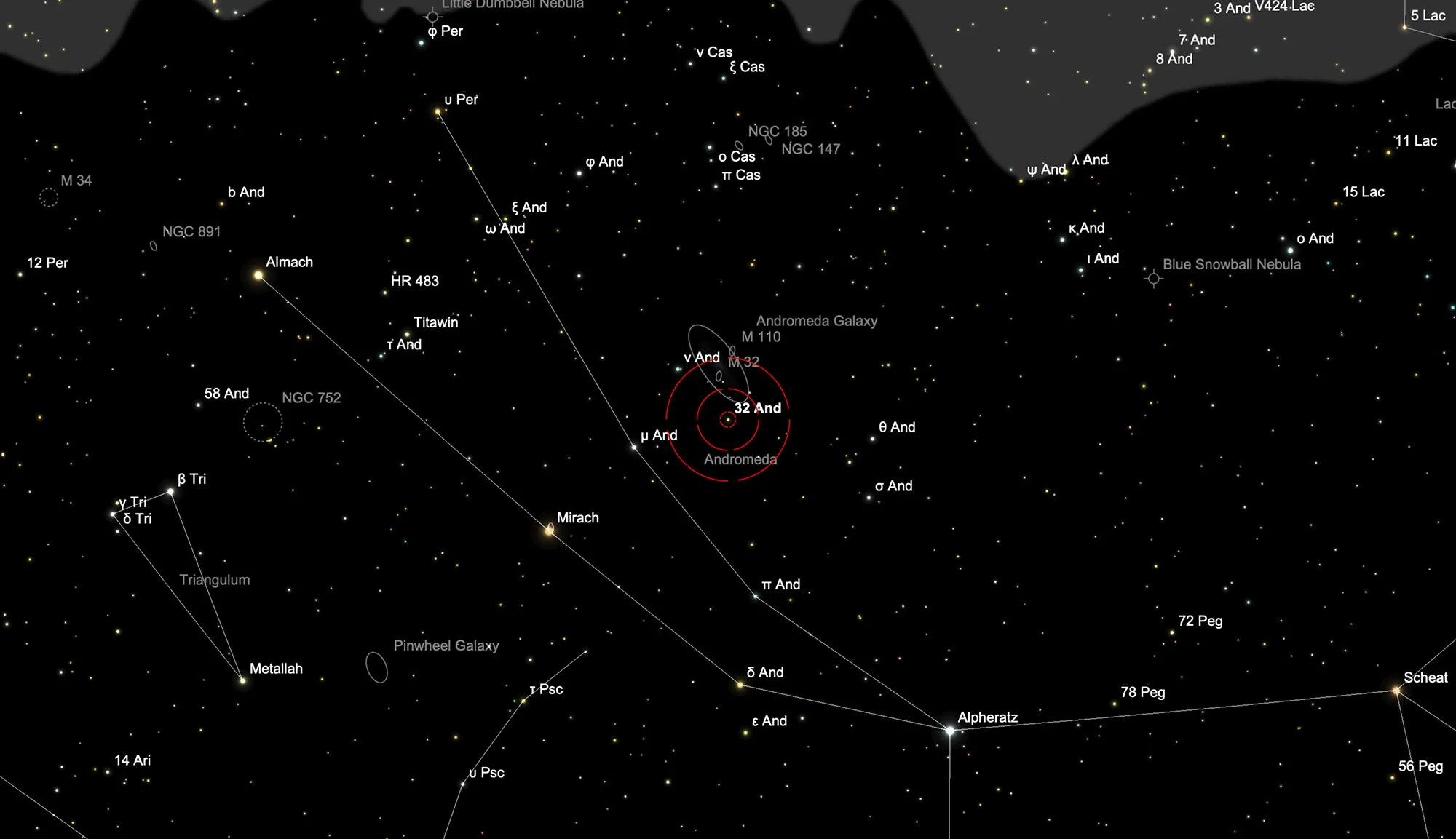Mayall II, Andromedas Globular Cluster (G 1)
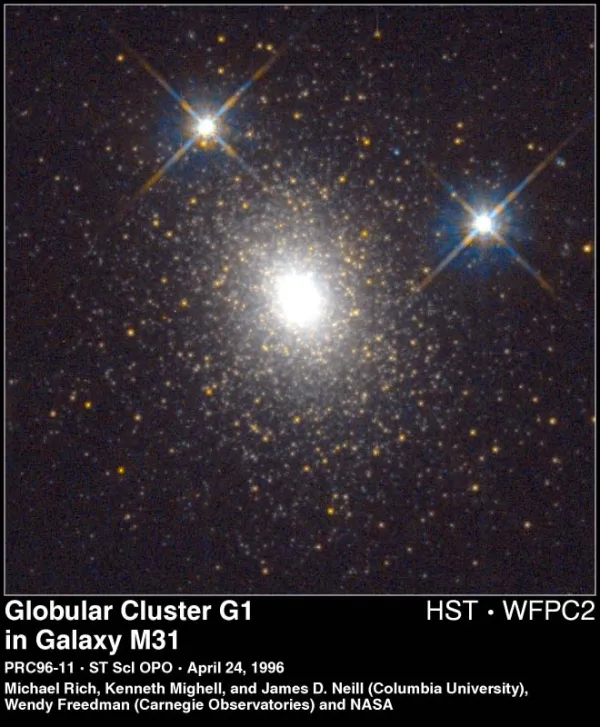
History
G1, also listed as NGC-224-G1 or Mayall II and known by the name Andromeda's Globular, is a globular cluster belonging to Andromeda Galaxy M 31. It was discovered in 1953 by the two American astronomers Nicholas Mayall and Olin J. Eggen on a photo plate from 1948 with the Palomar 48 inch telescope.
Physical Properties
The globular cluster G1 contains at least 300'000 (1 million according to other data) very old stars and is about 130'000 light years away from the centre of the Andromeda galaxy, which is 2.36 million light years away. From our perspective it appears 2.5 degrees from its centre and with 13.7 mag is the apparently brightest globular cluster of the local group - with the exception of the globular clusters that belong to our galaxy. The absolute brightness of G1 is given as -10.9 mag, which is about two million times brighter than our sun. Andromeda's globular cluster is also about twice as bright as the largest in our galaxy: Omega Centauri (NGC 5139) has an absolute brightness of -10.1 mag. G1 has an overall spectral type of G0 and a yellowish colour index (B-V) of 0.84. CCD images of the Canada-France-Hawaii telescope have shown that G1 is not spherical, but about 80 percent as wide as it is long. [117, 122, 161]
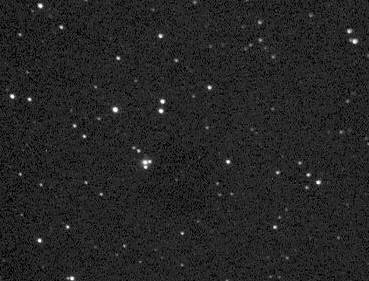

| Name | Type | RA (J2000.0) | Dec (J2000.0) | PM [mas/y] | Parall. [mas] | Rvel [km/s] | z | Size ['] | Magnitudes | Identifiers |
|---|---|---|---|---|---|---|---|---|---|---|
| Mayall II | GlC | 00h 32m 47s | +39° 34' 41" | -332 | -0.001107 | 0.0283 × 0.0283 | B 14.564; V 13.807; G 16.333849; R 13.208; I 12.684; J 11.849; H 11.13; K 11.042; u 15.58; g 14.04; i 13.23 | Gaia DR3 380653266294961024; HBK 0-1; M31GC J003247+393440; NAME Mayall II; SKHB 1; [BHB2000] 000-001; [FMZ2005] 1; [ME53] II; [TP2004] 1 | ||
| Mayall III | GlC | 00h 33m 34s | +39° 31' 19" | -1.668 | 4.1068 | -326.5 | -0.001088 | U 16.75; B 16.482; V 15.807; G 18.210779; R 15.325; J 14.257; H 13.711; K 13.577; u 17.3; g 16.07; r 15.52; i 15.25; z 15.09 | Gaia DR2 380660894156269056; Gaia DR3 380660894155337856; HBK 0-2; M31GC J003334+393119; NAME Mayall III; SKHB 2; [BHB2000] 000-002; [ME53] III |
Finder Charts
A tiny, extragalactic globular cluster does not seem to be easy to find, especially since it is far away from the host galaxy. But once you have found G1, with a little practice you will be able to adjust it again and again - even without a card. It is advantageous to choose an eyepiece at the beginning that offers at least 1° (better 2°) true field of view on the telescope, so that the distinctive star associations can be recognized more easily. On 3 October it is in opposition to the Sun and crosses the meridian at local midnight.
We start the extragalactic journey at the 5.3 mag bright star 32 And south of the Andromeda galaxy, which is still visible to the naked eye. Align the Telrad finder using the map below.
The star 32 And forms a conspicuous, claw-like formation with three other stars. From there about 2 degrees to the west you get to a slightly less conspicuous, but still memorable group of stars with the 8.8 mag bright star HD 2775, which is reminiscent of a crow's foot or a Greek capital psi (Ψ). Refer to figure 5.
About halfway between the last star on the red line (if there were red lines in space) of the eastern 'toe' and the 9.17 mag bright star SAO 53990 there is a small about 30° pointy, isosceles triangle. This is quite striking, because the northern corner is formed by two stars that are close together. The southern tip appears a bit diffuse: Voilà - there is G1! figure 6.
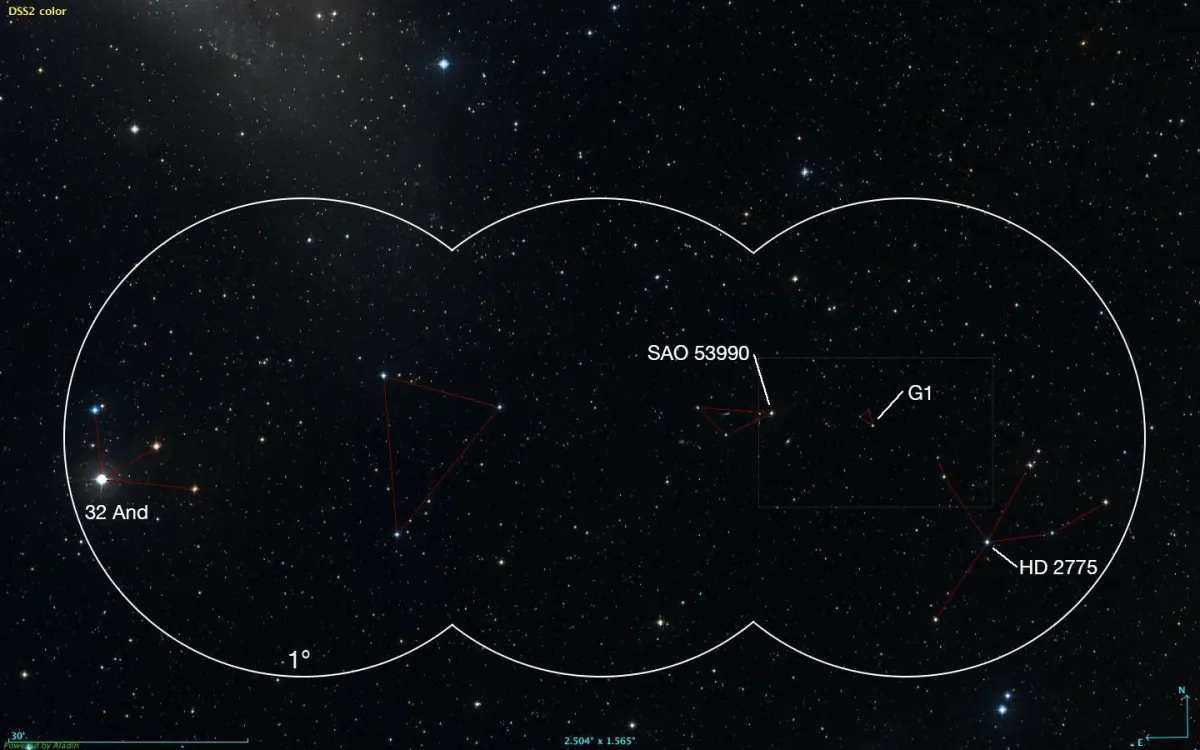
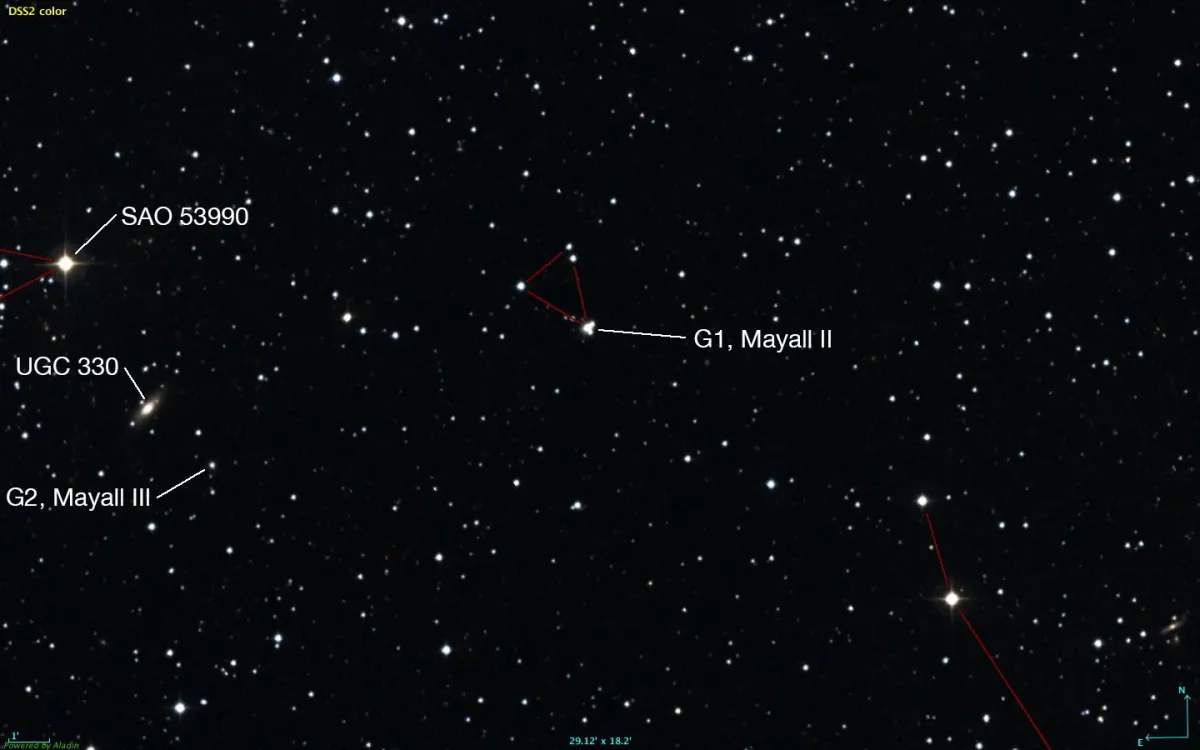
G2 or Mayall III is the closest extragalactic globular cluster in the Andromeda Galaxy and is in the immediate vicinity. But with Vmag 15.807 it is much weaker than G1. Not far from there is the galaxy UGC 330.
Visual Observation
150 mm Aperture: Finding the really somewhat special object G1 turns out to be quite easy with the help of the search plan. Unfortunately, the object itself is then difficult to observe: it is barely visible in the 15cm refractor - the small nebula can only be reliably seen with indirect viewing in good conditions, and one of the two foreground stars is also still there if the conditions are good visible. The diffuse impression of G1 is always preserved, regardless of how concentrated between 150x and 500x magnification is observed. A 15cm telescope is usually not enough under average sky conditions to be able to find this object safely. A 25 cm reflector telescope should be required for this. — 1996, Beat Kohler
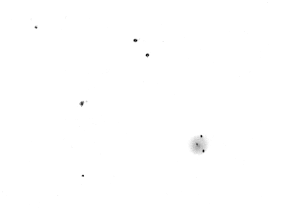
300 mm Aperture: Compared to others from our own galaxy, the globular cluster G1 does not really look like much, because it cannot be resolved into individual stars and is very weak and small. Still, it is a fascinating object because it is believed to be the most distant globular cluster that can be visually observed with amateur telescopes! From about a hundred times magnification, G1 shows up with indirect vision as a faint, diffuse, round nebula with two scarcely recognizable small asterisks immediately next to it. At 300x magnification, the two asterisks, as well as the core of the globular cluster, emerge more clearly (compare the Hubble image). The two faint asterisks on the south side of the small triangle are easily recognizable, can only be guessed visually - with a lot of encouragement. The stars of the cluster themselves cannot be resolved by a long way, which visually is a lot to ask for a 13.7 mag bright and so distant globular cluster. — 1996, Bernd Nies
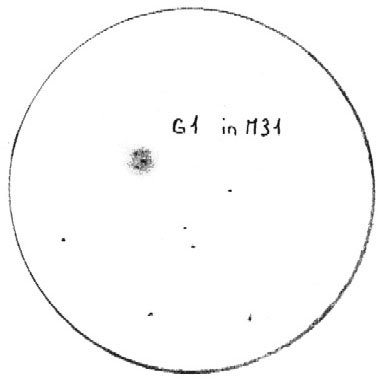
350 mm Aperture: G1, as the globular cluster of M31 is called, can be seen as a flat and foggy object in a medium-sized to larger amateur telescope. However, the cluster cannot be broken down into individual stars, which would be asking too much because of its distance from amateur telescopes. In addition to the bright core, two distant little stars can be seen slightly larger in magnitude than the nebula or globular cluster. The cluster can already be seen at 13.7 mag as a star point with an 8 inch aperture. — 14" PWO-Dobson, F:4.6 / TV-Nagler-Zoom 6mm-4mm, 266x-400x, 0.19°-0.13°, Eduard von Bergen
900 mm Aperture: The striking isosceles triangle with the globular cluster Mayall II at its apex is almost full-size. The globular cluster is very conspicuous in direct vision without any problems and shows an almost point-like bright core region with a round, diffuse nebula around it, in which the two bright foreground stars appear embedded. — 900 mm f/10 Cedes Nasmyth Cassegrain, Falera, 7. 9. 2024, Bernd Nies
